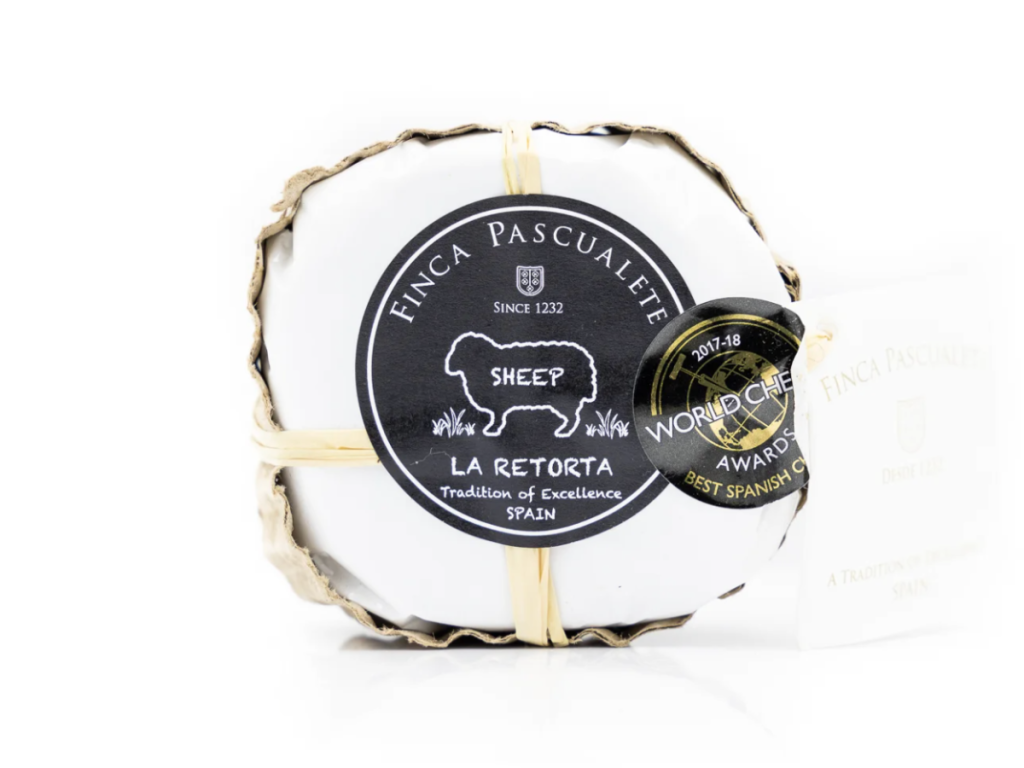Excerpt from Ari’s Top 5 enews
A special sheep’s milk cheese from western Spain

Pretty much everything about this cheese is intriguing—there’s a story and a half in every ounce. On top of which, the Pascualete is tasting particularly terrific right now; full flavored, complex, and, a bit paradoxically, both intense and eminently accessible at the same time.
Pascualete is a very special sheep milk cheese that’s made on a finca, or farm, that’s been in the Quintillana family since the 16th century. The buildings on the land were most likely built long before that, probably during Roman times. As was true with many well-to-do landowners in ancient times, the family almost never set foot on it. Like so much of Spain’s landed gentry, they leased the land to sharecroppers who came to Madrid each year to deliver their payments. All that changed when Luis de Figueroa y Perez de Guzman el Bueno, The Count of Romanones (no, no relation to Tommy Ramone) married an American woman named Aline Griffith from the small upstate town of Pearl River, New York. She’d originally gone to Spain during the war as a spy, part of the OSS, the predecessor of our modern-day CIA. Based in Madrid, she met and married her husband, and—as a commoner marrying a count—went on to quite proudly and provocatively wreak polite havoc with the high-end Spanish society.
In her own day, the Countess was as progressively punk as the Ramones. She published seven books, three of which detail her activities in espionage, and one of which (the one I’ve read) talks about her slow but persistent work to restore the Finca at Pascualete. When she first arrived, the American Countess’ appearance at the finca caused more than a bit of a hubbub. Back in those days, well-dressed upper-crust women would not be traveling out west, and wealthy land-owning families would only very rarely show up to spend time on their leased lands so far from the bustling capital of Madrid. The Countess, however, dove right in. As per what I wrote above, she took responsibility for the land and the people who worked it, creating her own version of an “impossible community.” She honored the finca’s history by immersing herself in the ways of the farm, getting to know everyone in the town, and then taking on the task of restoring it all to health. Over the years, she helped make it all into an active, viable agricultural venture.
Because of her efforts and the dedication of the folks who work the land at the finca, we have this amazing little sheep cheese for you. The milk from the finca is fantastic—fresh, organic, from the farm’s own herd of Merino sheep—limited in supply and big in flavor. It’s not inexpensive. The Merino sheep yield a minuscule 25 liters each (total) over the four months a year that they’re being milked. (By contrast, the Lacaune sheep used for Roquefort in France deliver about eight times as much.) A single four-ounce wheel of the Pascualino takes about a day’s worth of milk from four to five sheep. The flavor is terrific! Dense, delicious. A great pairing with the local peaches that are on the market, or also with ripe tomatoes and a little extra virgin olive oil like the one we get from the folks near the finca at Marques de Valdueza. The Pascualete is great on a cheese board of course, or just eaten as a snack with a bit of dark-crusted Bakehouse True North bread.
Before you eat a sliver of Pascualete, take pause for a minute to remember the story that has made it possible, to imagine what remote and rural western Spain would have been like 75 years ago, and the upstate New York socialite-turned-farmer working to tap the limited but beautiful natural resources of the region. Every time I eat the cheese, I actively appreciate the family and the folks who work the land today in 2023, and the impressively impossible community they have created.



